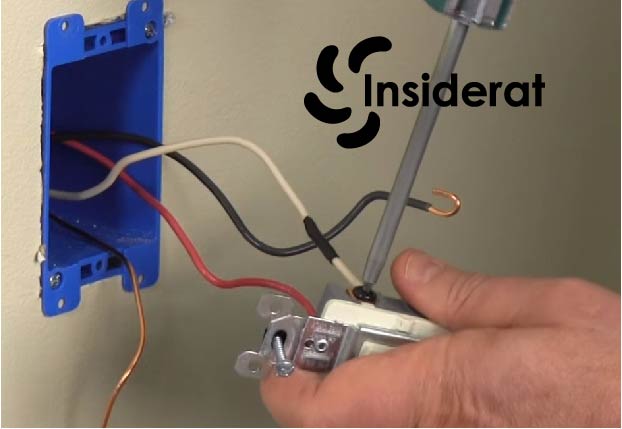how to wire a light switch with 3 wires
how to wire a light switch with 3 wires – Mastering the art of wiring a light switch with 3 wires is a skill that can enhance the functionality and flexibility of your home’s lighting system. Learning how a 3-way switch operates lays the groundwork for any homeowner or DIY enthusiast ready to tackle this electrical challenge.
The core of a 3-way switch setup is the ability to control a single light source from two separate locations. Unlike a traditional single-pole switch, a 3-way switch consists of three terminals: one common (usually marked) and two travelers. The travelers connect the two 3-way switches, allowing current to flow through either path, while the common terminal switches between connecting with either traveler.
To differentiate, standard switches offer a simple on-off function, controlling a light from a single location. In contrast, a three-way switch doesn’t have an off or on position. Instead, the switch’s position depends on the matching switch’s configuration, thus requiring a more complex wiring strategy.
Tools and Materials Needed for Wiring
Properly wiring a 3-way switch diagram demands a set of specific tools and materials essential for a safe and successful installation. Below is a list detailing what you’ll need to begin your project of electrical wiring 3-way switch configurations:
| Tool or Material | Function | Use in 3-Way Switch Wiring |
|---|---|---|
| Screwdrivers | Fastening and unfastening screws | Attaching switch to box, securing wire terminals |
| Wire Strippers | Removing insulation from wires | Prepping wires for connection to terminals |
| Voltage Tester | Confirming power is off | Ensuring safety before working on wires |
| Wire Connectors | Securing wire connections | Joining traveler and ground wires |
| Wire Nuts | Connecting wires together | For pigtail connections and grounding |
| Electrical Tape | Insulating wire connections | Reinforcing wire nuts and terminal connections |
| 3-Wire Cable | Transmitting electricity between switches | Interconnecting the two 3-way switches |
Now that you’re equipped with a deeper understanding of three-way light switch mechanisms, the differences from standard switches, and the essential toolkit, you’re ready to proceed with confidence. Each step forward brings you closer to mastering how to wire a light switch with 3 wires.
Preparation and Safety Guidelines Before Wiring
Embarking on a three-way switch installation requires not only technical know-how but a strong emphasis on safety and preparation. To safely wire a light switch with 3 wires, a meticulous step-by-step protocol must be followed to prevent electrical accidents.
- Turn Off Power at Circuit Breaker
- Verify Power is Off
- Review Local Electrical Codes
- Assemble Personal Protective Equipment (PPE)
- Check Wiring Diagrams
Having taken these precautionary steps, you’re well-equipped to proceed with wiring your 3-way switch, reducing your risk of hazards and laying the groundwork for effective 3-way switch troubleshooting.
| Preparation Step | Details | Tools/Equipment Needed |
|---|---|---|
| Circuit Breaker Shutdown | Locate the circuit breaker connected to the switch and switch it off. | Circuit Breaker Panel |
| Electricity Verification | Ensure no current is present with a voltage tester. | Non-contact Voltage Tester |
| Electrical Code Review | Study the local electrical installation codes for compliance. | Local Code Book |
| Gather PPE | Collect necessary safety gear to prevent electrical shock and debris injury. | Insulating Gloves, Safety Goggles |
| Diagram Confirmation | Ensure you have the correct diagram for a 3-way switch for reference. | Correct Wiring Diagram |
how to wire a light switch with 3 wires – Once you have confidently secured your work environment through these protocols, you will be well on your way to mastering how to wire a light switch with 3 wires and understanding essential three-way switch troubleshooting tactics should any issues arise during your installation efforts.
Step-by-Step Instructions: How to Wire a Light Switch With 3 Wires
Embarking on the project of wiring a light switch with 3 wires requires a clear understanding of each wire’s purpose and a systematic approach. By following these detailed steps, homeowners can ensure a successful three-way switch installation and enjoy the flexibility of controlling a light from two different locations.
Identifying the Wires and Their Corresponding Connections
Before proceeding, it is essential to identify the three wires involved in a 3-way switch circuit: the ‘common’ wire, typically marked with black or red insulation, and two ‘traveler’ wires, which may be of any color except green or bare copper. The common wire connects to the common terminal, usually distinguished by a different color screw on the switch, while the traveler wires connect to corresponding traveler terminals.
Wiring the First 3-Way Switch
- Ensure the power is off at the breaker and test with a voltage tester.
- Remove the faceplate and switch mounting screws to access the switch’s terminals.
- Connect the common wire to the common terminal on the switch.
- Connect the traveler wires to the traveler terminals, noting their arrangement for the second switch.
- Securely fasten the wires, reattach the switch to the wall box, and reinstall the faceplate.
Connecting the Wires to the Light Fixture
The light fixture will have a ground wire and two other wires meant for connecting to the travelers. Connect the ground wire to the grounding screw or wire in the junction box. Connect the remaining wires from the fixture to the traveler wires using wire nuts, matching the appropriate colors if indicated. Ensure a tight, secure connection for each.
Wiring the Second 3-Way Switch
- Repeat the process of verifying that the power is turned off and the area is safe to work in.
- Open the switch box for the second 3-way switch.
- Attach the common wire from the ceiling box to the common terminal on the second switch.
- Connect the two travelers to the traveler terminals in the same arrangement as the first switch.
- Ensure all connections are secure, mount the switch back into the wall box, and reattach the faceplate.
By following these methodical steps, and referring to a proper wiring a 3-way switch diagram, you can achieve a fully functional 3-way light switch setup. After completing the three-way switch installation steps, remember to restore power at the circuit breaker and test both switches to verify correct operation.
Conclusion
Mastering the art of wiring a light switch with 3 wires is a significant achievement in home electrical installations, yet it is only the beginning. Even with meticulous attention during setup, one might encounter hitches post-installation. This closing section is dedicated to smoothing out those final creases, ensuring your three-way light switch operates seamlessly and continues to do so for years to come.
Troubleshooting Common Issues After Installation
Encountering difficulties after installation is not uncommon, and 3-way switch troubleshooting is an integral part of the process. If faced with a non-responsive or improperly functioning light switch, begin by checking the connections against your three-way switch diagram. Ensure that wire placements align with the correct terminals, and all connections are secure. Miswiring is often the culprit in these scenarios, and a systematic review can illuminate issues that went unnoticed during the initial installation.
Final Testing and Operating Your New 3-Way Light Switch
Once you’ve tightened all connections in your three-way light switch circuit, it’s time for the final testing. Operate the switch from both locations to confirm that the wiring a light switch with 3 wires has been successful. Accurate wiring should result in a light that responds appropriately from both switches, regardless of the position of the other switch. Should you face any inconsistencies, refer back to the installation steps to locate any potential errors.
Maintenance Tips for Your Newly Wired Light Switch
Maintaining your new setup is essential for both performance and safety. Regular inspections of the light switch and associated wiring can preempt any potential issues. Cleanliness also plays a role; ensure your light switch is free from dust and debris with safe cleaning practices. Watch out for signs of wear or electrical issues, such as loose switches or flickering lights, which may require professional attention. With proper care, your hard work will reward you with a reliable and enduring three-way light switch configuration.

